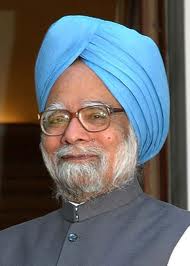
New Delhi, June 27: Pranab Mukherjee resigned as Union finance minister on Tuesday, giving Prime Minister Manmohan Singh a free hand to reorient the key ministry during an economic slowdown while raising the possibility of a larger Cabinet reshuffle in about six weeks from now.
Mukherjee submitted his resignation to the prime minister to end his career as Congress leader ahead of filing the nomination for the presidential election for which he is a clear favourite. The PM is expected to retain the ministry in the coming days during which he is widely expected to tweak policies seen as contributing to negative sentiment.
Singh replied to Mukherjee's resignation by lavishing praise on the outgoing minister. "Our government owes a deep debt of gratitude to you for your invaluable contribution to its work over the last eight years," he wrote. "It is a testimony to your extraordinary abilities and your stature in public life that you have carried an onerous range of responsibilities with ease and accomplishment."
President Pratibha Patil accepted Mukherjee's resignation. The Prime Minister will look after the work of the finance ministry while power minister Sushilkumar Shinde is the likely replacement for Mukherjee's other key role as the leader of the Lok Sabha.
The Prime Minister is sure to look at fresh ideas to deal with the slowdown and low market sentiment under Mukherjee's watch. Sources in the government said the PM was not in sync with Mukherjee over how to deal with the sliding economy, but was hamstrung by Mukherjee's clout and seniority as party insider. In fact, the President-in-waiting was never the PM's first choice for the finance ministry but Mukherjee landed the job because of the leadership's preference for a politician.
His exit from the government now gives Singh an opportunity to carry out the changes he could not implement so far. However, there are indications that the exacting nature of the job, rendered tougher by the slowdown, may lead him to opt for a full-time finance minister of his choice before the beginning of the monsoon session of Parliament scheduled to begin in a month's time.
Many in the party view home minister P Chidambaram as the frontrunner for the vacancy in the finance ministry. But shifting Chidambaram to the finance ministry will create its own set of complications, leaving the leadership with the complicated task of finding a replacement in the politically crucial home ministry. The job, given the looming terror threat, cannot be juggled casually.
This can set the stage for a larger Cabinet rejig, a possibility necessitated as much by the likely need to find a fulltime replacement for Mukherjee as by the vacancy triggered by Virbhadra Singh's resignation as small, micro and small enterprises minister on Tuesday over graft charges. There is a view in the Congress that the PM needs to shuffle the pack to revive a business-like perception about his government after the impression of policy paralysis created by anti-corruption campaign of civil society and shocking defeats in assembly elections.





Comments
Add new comment